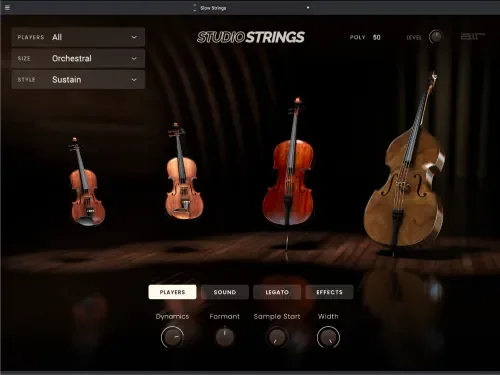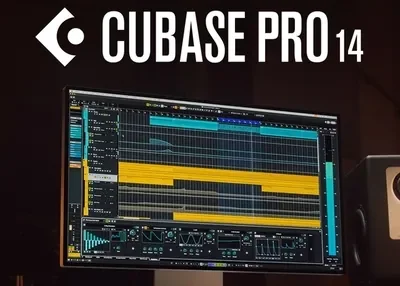Unlock Endless Sound Possibilities with Studio Strings
If you’re a music producer or composer looking to create rich, orchestral sounds, Studio Strings offers an incredible toolkit to bring your vision to life. This powerful software provides a variety of instrument models and articulations, placing the magic of a full orchestra right at your fingertips. In this guide, we’ll dive into the unique features of the four primary string instruments included in Studio Strings and how they can elevate your music production.
Why Choose Studio Strings for Music Creation?
Studio Strings stands out as a versatile solution for crafting authentic orchestra sound creation. With multiple instrument options and customizable articulations, it allows you to experiment with diverse tones and textures. Whether you’re scoring a film, producing a classical piece, or adding depth to a modern track, this tool offers unparalleled flexibility. Let’s explore the four key models that make Studio Strings a must-have for any musician.
1. Bass Model: The Foundation of Deep Tones
The Bass Model represents the deepest and most powerful instrument in the orchestral string family. Often referred to as the sub-bass, it delivers profound low-end frequencies that anchor your compositions. If you’re aiming to add weight and intensity to your tracks, the bass model is your go-to choice for creating a solid sonic foundation.
2. Cello: The Soulful Heart of the Orchestra
Sitting just above the bass in terms of pitch, the cello brings a warm and emotive quality to any arrangement. Its slightly higher range makes it ideal for solo melodies and lead parts in orchestral works. The cello tones are instantly recognizable, offering beautiful harmonics that can evoke deep emotion in listeners, making it a favorite for cinematic and classical compositions.
3. Viola: Adding Depth with Mid-Tone Richness
The viola is often overshadowed by its more famous cousin, the violin, but it holds its own with a unique mid-tone character. Its sound is fuller and deeper than a violin, providing a lush texture that enhances the overall harmony of an orchestra. With its viola richness, this instrument is perfect for filling out arrangements and adding a layer of sophistication to your music.
4. Violin: The Star of String Melodies
As the highest-pitched instrument in the string section, the violin often takes center stage in orchestral pieces. It’s the instrument most people associate with string melodies, thanks to its bright, soaring tones. In classical compositions, multiple violin sections are typically used to create intricate layers, making it the backbone of many iconic melodies.
How Studio Strings Transforms Your Music Production
With these four distinct models—bass, cello, viola, and violin—Studio Strings empowers you to craft dynamic and authentic orchestral sounds. Each instrument brings its own personality to the mix, allowing for endless creativity in your music production tools. Whether you’re a seasoned composer or just starting out, this software provides the resources you need to build professional-grade tracks.
Tips for Using Studio Strings Effectively
- Experiment with different articulations to add realism to your compositions.
- Layer multiple string sections to create a fuller, more dynamic sound.
- Use the bass and cello for grounding tones, while viola and violin can handle melodic lines.
Conclusion: Bring Your Orchestra to Life
Studio Strings is more than just a plugin; it’s a gateway to crafting breathtaking orchestra sound creation. By harnessing the power of its bass, cello, viola, and violin models, you can produce music that resonates with depth and emotion. Ready to elevate your tracks? Dive into Studio Strings and let your creativity soar with the sound of a full orchestra at your command.


